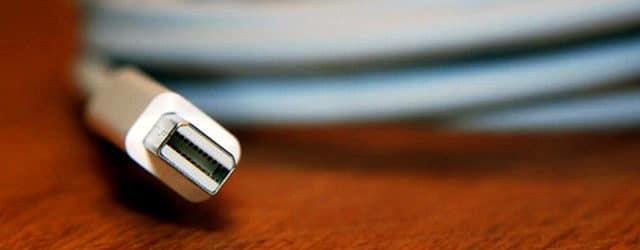Perhaps you’ve had digital dreams where you were connected to a peripheral device at a super fast data transfer rate, let’s say 10 Gbps. You were editing video and moving huge files around as if they were JPEG thumbnails while using an external monitor attached to the same port. You awoke from the dream as you were shouting in your sleep, “This is groundbreaking; that’s what it is, groundbreaking!” Well, it seems dreams do come true, you were likely dreaming about the connection technology called Thunderbolt™.

Thunderbolt was developed by Intel under the code name Light Peak, while they are quick to point out Apple’s collaboration as well. Thunderbolt has a long list of features that are sure to astonish any computer geek and amaze the average user. First of all, its dual-channel design enables it to run a data intensive device on one channel with additional devices on the other channel. Since Thunderbolt is also dual-protocol (PCI Express and DisplayPort), the same connection port can accommodate an external drive, a video monitor, or any compatible device. Bundle these features with the option of an optical or electrical connection, support for bus powered units, along with other technical goodies, and it seems, “They’ve thought of everything.”
Apple, who just has a way of staying in front of competitors, debuts the technology in their newest MacBook line of laptop computers. As touched upon, Apple collaborated with Intel to bring about Thunderbolt. In other words, with these parties involved, there’s a good chance Thunderbolt will live up to the expectations – and wow what expectations!
By now, you may be starting to ponder the question, “Does this mean I have to buy a bunch of new peripheral devices if I buy a computer with Thunderbolt?” The short answer is no, it seems USB, Firewire, and other compatible devices can be connected using adapters. This is important if you already own some nice external drives and other peripherals.
So what will Thunderbolt mean for users? A super fast, almost universal connection that supports many existing peripherals or another standardization to deal with? Sure it’s new technology and with that brings questions, but Thunderbolt seems well thought out in terms of backwards compatibility and its speed and agility could make a few upgrades more than worthwhile.
It is too early to tell if Thunderbolt will end up on every computer that comes to market. It may be that some premium systems have it, but budget ones do not – initially that is. One thing for sure, it is such an enticing development, it is sure to be a consideration for anyone buying a computer to be used with multimedia or any other data intensive application.
About The Writer
Henrik Larsson owner of a new application that enables users to install additional Facebook Emoticons writes. Emoinstaller enables users to use additional Facebook chat emoticons.
Tags: #Intel
